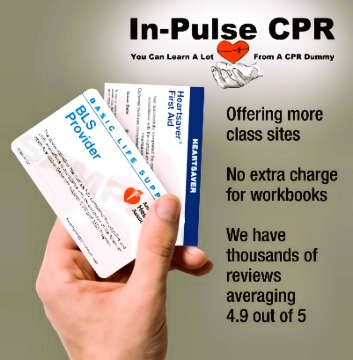Before registering, confirm the class location, date, and time. Verify which type of CPR certification you need (such as Basic Life Support for healthcare providers or Heartsaver for non-medical participants). Ask if AED training is included and confirm how long the certification will remain valid—typically two years.
While you don’t need to study extensively, it helps to review basic emergency response concepts ahead of time. Becoming familiar with the CAB sequence (Compressions, Airway, Breathing) will give you a head start and make the class feel more comfortable.
Bring a valid photo ID for certification purposes and a payment method if you haven’t prepaid. A pen or pencil for notes, a water bottle to stay hydrated, and any required paperwork are also recommended. Having your emergency contact information with you can be helpful as well.
Be ready for hands-on practice and potentially emotional scenarios. Silence your phone to avoid distractions, approach the training with an open and positive mindset, and remember that mistakes are part of the learning process.
Most CPR certifications are valid for two years. After that, you’ll need to take a renewal class to stay current with American Heart Association guidelines and keep your skills sharp.
An Automated External Defibrillator (AED) is a life-saving device commonly found in workplaces, schools, and public places. Learning how to use an AED along with CPR increases the chances of survival for someone experiencing sudden cardiac arrest.
Anyone can take a CPR class — from healthcare professionals to teachers, childcare providers, church groups, and everyday community members who want to be prepared for emergencies.
No prior medical experience is required. Our instructors guide you step-by-step, making CPR skills easy to learn for both medical and non-medical participants.
In-Pulse CPR offers multiple certifications including Basic Life Support (BLS) for healthcare providers, Heartsaver CPR & First Aid for the general public, and specialized CPR training for workplaces, schools, and community groups.
Most CPR classes last 2.5 to 4 hours, depending on the course type and whether First Aid training is included.
Yes. Upon successful completion, you’ll receive an American Heart Association certification card, recognized nationwide and valid for two years.
Yes. In-Pulse CPR specializes in onsite training for businesses, schools, churches, and community groups. Our instructors come to you, making it convenient and cost-effective for teams.
The core concepts are the same, but the techniques vary slightly. For example, chest compression depth and rescue breathing methods differ between adults, children, and infants. Our classes cover all age groups.
You’ll practice chest compressions and rescue breaths on manikins. While it does require some physical effort, most people find it manageable, and our instructors guide you through proper technique to prevent fatigue.
Our goal is to help you succeed. Instructors provide coaching and extra practice time if needed, so nearly all students pass by the end of class.
In-Pulse CPR is one of the largest American Heart Association–approved training centers in Minnesota, Florida, Tennessee, and Pennsylvania. We’ve trained over 150,000 students since 2009, with convenient locations and highly experienced instructors.



